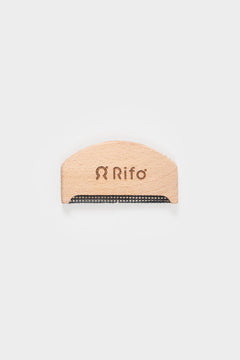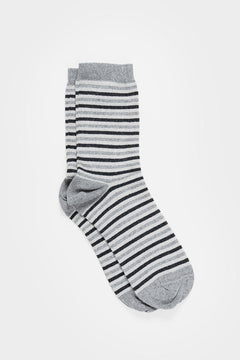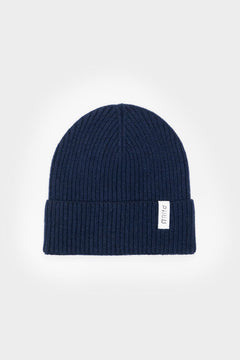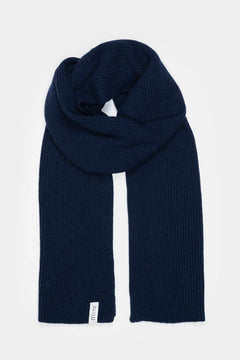We often talk about fibers produced through chemical processes.
We generally talk of them in a negative way, as something that compromises the recycling of natural materials and requires chemical and industrial processes with a very high impact on the environment.
They are in fact mostly synthesized by polymers derived from petroleum.
This is true, in fact they are mostly used in the textile industry and during the years they have overtaken natural fibers.
But maybe we should know them better.

The biggest part of synthetic and artificial fibers are produced in far east countries, such as China and India, where together with fast fashion, they represent a huge economic resource.
In this article we won't talk only about the environmental impacts of these fibers. We want to learn how to recognize and distinguish them, understand their history and uses over time.
We will talk about the differences between the various synthetic and artificial textile fibers, also called man made fibers, we will understand how they were born and why their value depends on the use we make of them.
Which are the differences between man-made fibers and synthetic fibers?
They are not the same thing. In both cases they are created in a laboratory, but they come from different types of materials.
First of all, what does synthetic fabric mean? Synthetic fibers are commonly created through the indirect synthesis of petroleum derivatives.

Artificial fibers, on the other hand, also called rayon, are generally derived from natural materials, through chemical processes. For example the tencel, obtained from the cellulose of trees, usually grown in a responsible and non-intensive way.
Thanks to their natural derivation, artificial fibers are also biodegradable and they absorb sweat in a better way compared to synthetic fibers.
Artificial plant based fibers have a long history. The first examples date back to the early 1900s, when cupro was created in Germany. A fiber similar to silk, created through chemical processes starting from cotton waste, the linters, the filaments that cover its seeds.
For what purpose was cupro used? It was used mainly for feminine stockings, until that moment made with inaccessible silk, or with raw cotton.

Milk fiber is also is an artificial fiber, in this case the material is created from animal proteins. It is a material born in Italy during the fascist period, called Lanital at that time. In that historical moment the autarchy led to many experiments in the textile field, also for what concerns the recycling of fibers (here the historian Giuseppe Guanci talked about it in a video made for Rifò).
The ever-present polyester
Polyester is the most widely used synthetic textile material in the world, surpassing cotton. It represents 60% of the synthetic fibers on the market.
It is part of the PET family, the same material of plastic bottles. For this reason, its recycling process is very popular.

We at Rifò have chosen recycled polyester combined with recycled cotton for our first t-shirt and socks. In this way we reduced water and Co2 impact.

However, this year, we wanted to improve, creating a 100% cotton t-shirt (50% recycled, 50% organic virgin cotton). In this way we were able to facilitate the regcycling process, otherwise compromised by the presence of polyester combined with cotton.
But let's go back to polyester. Very versatile and adaptable to different uses, the diffusion of this material depends on its production benefits. For example, have you ever ironed a polyester t-shirt? No, because it is not necessary. Well, this saving of time and resources can be reproduced on a large scale production.
Acrylic, the king of low cost
Acrylic fiber is widely used in furniture and interior desing, but much less in clothing. Except for knitwear, a sector where it is widely used thanks to its very low cost.
For example, a 100% acrylic sweater produced in the far East can cost the manufacturer around € 4.
The production of acrylic is also highly impacting from an industrial point of view, since it involves a massive use of chemical solvents.

Beside, a 100% acrylic jersey is really of low quality: it will cause pilling after a few uses, and like all synthetic fibers it does not absorb the body sweat.
How women tights pushed the development of syntethic fibers: Lycra and nylon history
When the American soldiers liberated Italy at the end of second world war, they brought not only chewing gum, but another novelty: nylon stockings.

Italian women went crazy for this new product: finally something cheaper than silk but with a refined touch.
The American chemical company Dupont patented this product in the 1930s. But women's stockings still had a problem, they were not elastic. Dupont thus invented a new material at end of the 1950s. A fiber combined with nylon that was able to reach high levels of resistance and elasticity: Lycra.

In this case the brand name became the name of the material. This is the case of Lycra, which actually belongs to the elastan family, also called spandex.
Lycra and nylon have always been widely used in the the clothing sector for underwear, precisely because of their elasticity.
But also swimwear and sportswear in general, thanks to their high performance. Today those materials are more and more often recycled. For example Econyl, recycled nylon; or Lycra EcoMade, which contains a percentage of recycled fibers.
Lycra yarn is also used in knitwear to strengthen a natural yarn and make it more elastic.
Also Rifò recycled cashmere and jeans sweaters will have a small percentage of elastan next season. It only will be inserted in strategic and limited points, such as the neck, the rib and the cuffs, in order to strengthen the garment, without compromising the possibility of recycling it again.
Synthetic fibers, breathability, and sport
Synthetic fibers, in general, have a very low capacity to absorb water and therefore they retain sweat. Just to make a comparison, wool absorbs 50% of human body water, without appearing wet, while a synthetic fiber between 4 and 6%.
So why are synthetic fibers used so much in sports?
Because the technical performance of these fabrics, their resistance, elasticity and their lightness are priceless and very often they contribute to improve the athletic performance. Beside, the lack of breathability of a synthetic fabric can be overcome by creating more sparse textures, which allow the passage of air and the evaporation of sweat.

Microfibers and microplastics the nightmare of the sea
In addition to the manufacturing impact, the biggest problem with synthetic fibers in the end is one: the release of microplastics into the sea due to machine washing.
Using the washing machine, a city of 100,000 inhabitants releases every day 15,000 plastic bags into the sea under the form of microplastics.

Fibers such as polyester, nylon, acrylics also exist in the microfibers version, and they are a big problem for the sea.
Just because they are micro, almost invisible, and therefore more difficult to fight as they release more material than normal synthetic fibers.
A few examples? The pile. A non-woven microfiber with a brushed surface, which is easily dispersed with washing.
Well luckily we have good news about it, at least there is a solution to this: the Guppy Friend washing bag. A bag where you can put your laundry in the washing machine, in order to retain all these harmful fibers which otherwise would end up in the sea.
For every fiber its own use
In conclusion, each textile fiber, artificial or natural, has some particular characteristics and different goals. These must be taken into consideration, first of all, to design durable garments suitable for the purpose for which they were thought.
It would be great to be able to use only natural and recycled fibers, but we must be realistic, in some cases this is not possible.
We believe that critizing something is never useful, while knowing things it is. So why don't we try to ask ourselves what is our closet made of and how many years a garment made of a particular material can last in our wardrobe?








